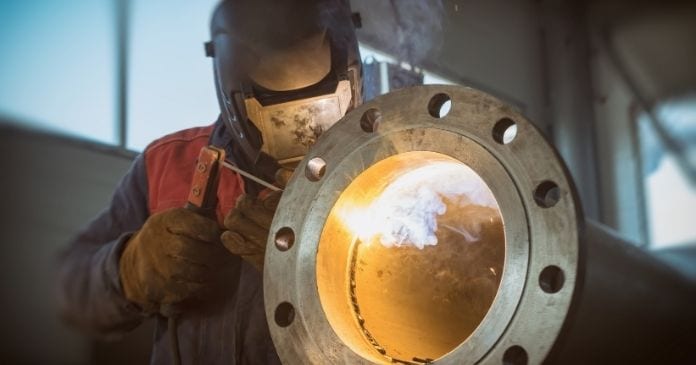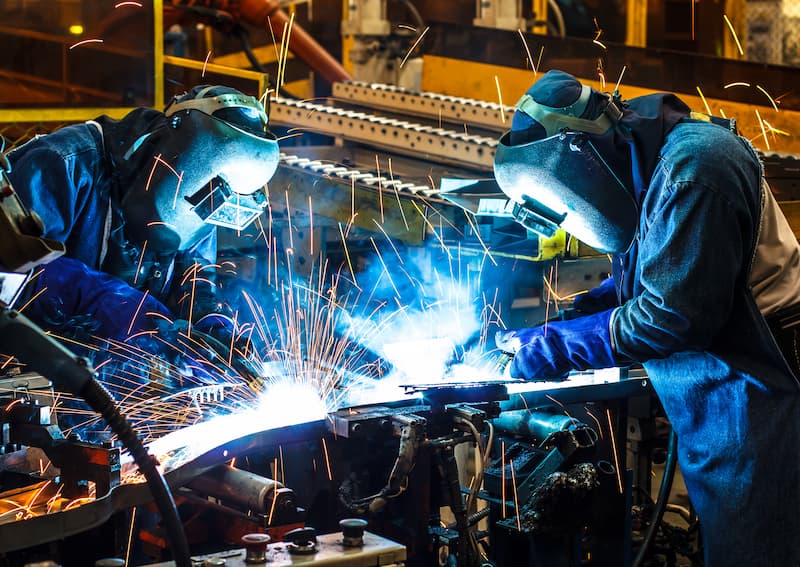Common Welding Repair Work Issues and Exactly How to Address Them Efficiently
Welding repair services typically encounter a range of issues that can endanger the stability of the end product. Typical issues include poor penetration, porosity, and imbalance, to name a few. Each flaw provides special difficulties that need specific approaches for resolution. Understanding these concerns is important for welders aiming to enhance their results and abilities. This discussion will certainly check out these usual welding repair service problems and reliable methods to resolve them.
Insufficient Infiltration
Insufficient penetration occurs when the weld metal falls short to completely fuse with the base material, leading to weak joints and potential architectural failures. This concern commonly comes from insufficient warmth input, inaccurate electrode angle, or inappropriate welding speed. Welders may experience insufficient penetration as a result of a mistake of the required specifications for a certain product thickness or type. Furthermore, contamination on the base material's surface area can impede efficient bonding, exacerbating the trouble. To address poor infiltration, welders ought to ensure appropriate setups on their equipment and keep a tidy job surface. Routine inspection of welds is suggested to determine any shortages early, enabling prompt improvements and the avoidance of compromised architectural honesty in welded assemblies.
Porosity
Porosity is an usual flaw in welded joints that shows up as tiny gas bubbles trapped within the weld metal. This defect can endanger the honesty of the weld, bring about reduced strength and prospective failing under stress and anxiety. Fabrication. Porosity commonly emerges from contamination, moisture, or incorrect welding strategies, which allow gases to escape right into the molten weld pool. To attend to porosity, welders ought to guarantee appropriate surface area prep work, keep a clean workplace, and utilize suitable welding specifications. Additionally, selecting the appropriate filler product and securing gas can minimize gas entrapment. Normal inspection and testing of welds can help identify porosity early, ensuring prompt corrective actions are taken, therefore maintaining the top quality and integrity of the welded structure
Imbalance
Misalignment in welding can occur from numerous aspects, consisting of incorrect setup and thermal expansion. Understanding the origin is necessary for efficient resolution. Numerous correction techniques are available to straighten parts and assure structural honesty.
Sources of Misalignment
Welding imbalance usually stems from a variety of underlying concerns that can jeopardize architectural integrity. One key cause is incorrect fit-up of parts prior to welding, which can result in gaps and uneven surfaces. Variations in thermal expansion during the welding procedure can also cause distortion, especially if the materials being joined have different coefficients of development. Furthermore, poor fixturing and securing may stop working to hold parts firmly in location, resulting in activity during welding. Poorly kept tools, consisting of welding devices and devices, might introduce incongruities in the weld bead, additional adding to imbalance. Operator error, stemming from not enough training or experience, can also play a substantial role in producing misaligned welds.

Improvement Techniques Readily Available
Attending to misalignment effectively calls for a combination of restorative methods tailored to the specific problems available. One common technique is using jigs or fixtures to hold components in the appropriate setting during welding, making sure constant alignment. In addition, preheating the materials can help decrease distortion and enhance fit-up. For considerable imbalance, mechanical adjustment techniques, such as utilizing hydraulic jacks or clamps, can be used to correct the position before welding. Post-weld warm therapy might also be necessary to relieve stresses triggered by misalignment. Careful examination and adjustment throughout the setup phase can avoid misalignment concerns from ending up being substantial problems, advertising a smoother welding procedure and enhancing total architectural stability.
Distortion
Distortion is a common obstacle in welding that can occur from various factors, consisting of uneven heating and air conditioning. Understanding the sources of distortion is vital for implementing effective prevention strategies. Resolving this problem not just enhances architectural stability however additionally improves the total top quality of the weld.
Sources of Distortion
When subjected to the extreme heat of welding, materials usually go through changes that can lead to distortion. This phenomenon mainly occurs from thermal development and contraction during the welding procedure. As the weld area warms up, the material broadens; upon cooling, it acquires, which can produce interior anxieties. Furthermore, uneven heating across a workpiece can aggravate these stresses, causing warping or flexing. The kind of material also plays a substantial duty; steels with varying thermal conductivity and coefficients of development might react in different ways, leading to unpredictable distortions. Poor joint layout and inadequate fixturing can add to misalignment throughout welding, increasing the probability of distortion. Understanding these causes is necessary for effective welding repair and avoidance methods.
Avoidance Techniques
Reliable prevention methods for distortion during welding emphasis on controlling heat input and guaranteeing correct joint design. Preserving a constant warmth input helps to decrease thermal expansion and tightening, which can bring about distortion. Utilizing methods such as preheating the work surface can also lower the temperature slope, advertising consistent heating. In addition, picking suitable joint styles, such as T-joints or lap joints, can enhance stability and reduce stress concentrations. Carrying out proper fixturing to safeguard the work surfaces in position further aids in preserving positioning during the welding process. Staggered welding sequences can distribute warm extra uniformly, protecting against local distortion. By using these strategies, welders can substantially lower the likelihood of distortion and improve the total quality of their welds.
Splitting
Splitting is a common problem encountered in welding repair services, frequently resulting from numerous variables such as incorrect air conditioning prices, product choice, or poor joint prep work. The incident of cracks can greatly jeopardize the honesty of the weld, leading to possible failures during operation. To resolve this concern, welders need to first evaluate the origin creates, guaranteeing that products are compatible and suitably chosen for the particular application. Additionally, controlling the air conditioning rate throughout the welding process is essential; rapid air conditioning can cause stress and bring about cracking. Appropriate joint style and prep work additionally add to reducing the threat. Executing these techniques can enhance weld quality and sturdiness, inevitably decreasing the probability of breaking in ended up weldments.

Insufficient Blend
A considerable concern in welding repair services is insufficient fusion, which takes place when the weld steel does not properly bond with the base material or previous weld passes - Montana Mobile Welding and Repair Fabrication. This issue can bring about weaknesses in the joint, potentially endangering the stability of the welded framework. Aspects contributing to insufficient blend include inadequate heat input, inappropriate her explanation welding strategy, and contamination of the surfaces being joined. To address this concern efficiently, welders should ensure proper pre-weld cleansing and surface preparation, along with readjust their welding criteria to achieve sufficient infiltration and fusion. Normal inspection throughout the welding procedure can also help determine insufficient combination early, permitting timely restorative measures to boost the overall quality of the weld
Overheating
While welding fixings can improve structural honesty, overheating offers a considerable obstacle that can lead to material destruction. Extreme heat during welding can modify the mechanical buildings of steels, causing lowered strength, increased brittleness, and bending. This sensation is specifically crucial in high-stress applications where architectural dependability is extremely important. Identifying overheating can entail visual examinations for discoloration or distortion, as well as keeping an eye on temperature during the welding process. To minimize the threats related to overheating, welders must use proper strategies, such as managing warmth input, readjusting traveling rate, and making use of ideal filler products. Additionally, carrying out pre- and post-weld warm treatments can assist bring back material properties and improve the general quality of the repair work, making certain long-lasting efficiency and security.
Regularly Asked Inquiries
What Are the Common Indicators of a Welding Issue?

Just How Can I Evaluate My Welds for High quality?
To test welds for top quality, one can utilize visual examinations, ultrasonic testing, and radiographic methods. Each technique ensures architectural stability, recognizes defects, and verifies adherence to specified criteria, inevitably flux core enhancing the reliability of the bonded joints.
What Safety and security Precautions Should I Take While Welding?
When welding, one need to focus on security by using appropriate personal protective equipment, making certain correct air flow, protecting flammable materials away, keeping a tidy work space, and being mindful of surroundings to protect against accidents and injuries.
Can I Repair a Weld Without Redesigning the Entire Joint?
Fixing a weld without redesigning the entire joint is possible, relying on the damages (Belgrade Welding). Methods such as grinding, adding filler material, or using a welding process can effectively resolve specific imperfections while preserving the bordering framework
What Tools Are Crucial for Reliable Welding Repairs?
Important tools for effective welding repairs include a welding device, cord brush, grinder, protective gear, clamps, and filler materials. Each device plays a crucial role in making sure high quality and safety and security during the repair service procedure. Porosity generally emerges from contamination, wetness, or incorrect welding techniques, which permit gases to escape into the liquified weld pool. Improperly maintained devices, including welding equipments and tools, might introduce variances in the weld grain, further adding to misalignment. When subjected to the extreme warm of welding, products commonly go through changes that can lead to distortion. Fracturing is an usual issue experienced in welding repair services, commonly resulting from different factors such as incorrect cooling prices, material choice, or poor joint preparation. A substantial issue in welding repair services is insufficient blend, which takes place when the you can try here weld steel does not adequately bond with the base material or previous weld passes.
Comments on “Causes of weld porosity and how Belgrade Welding handles them”